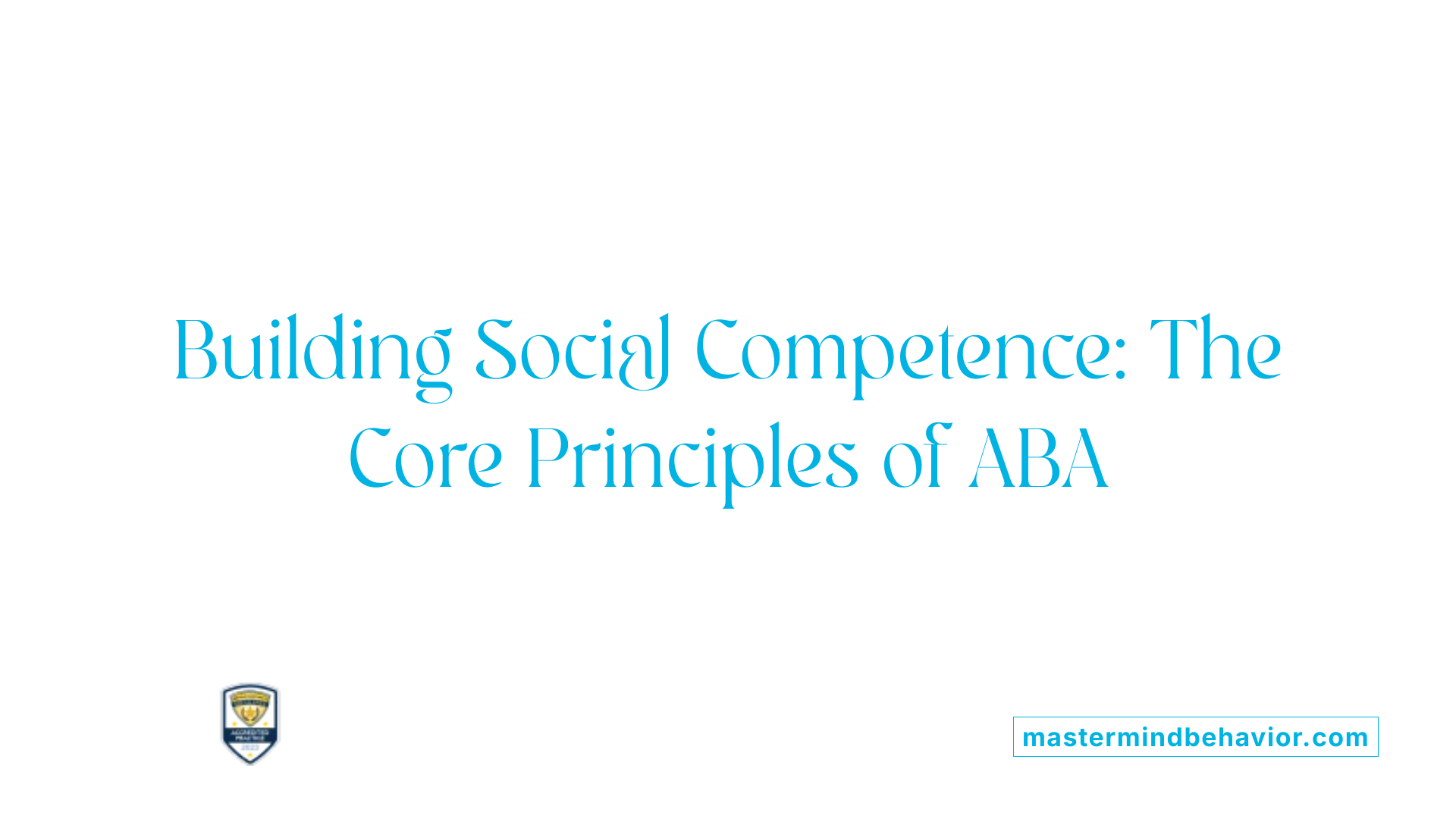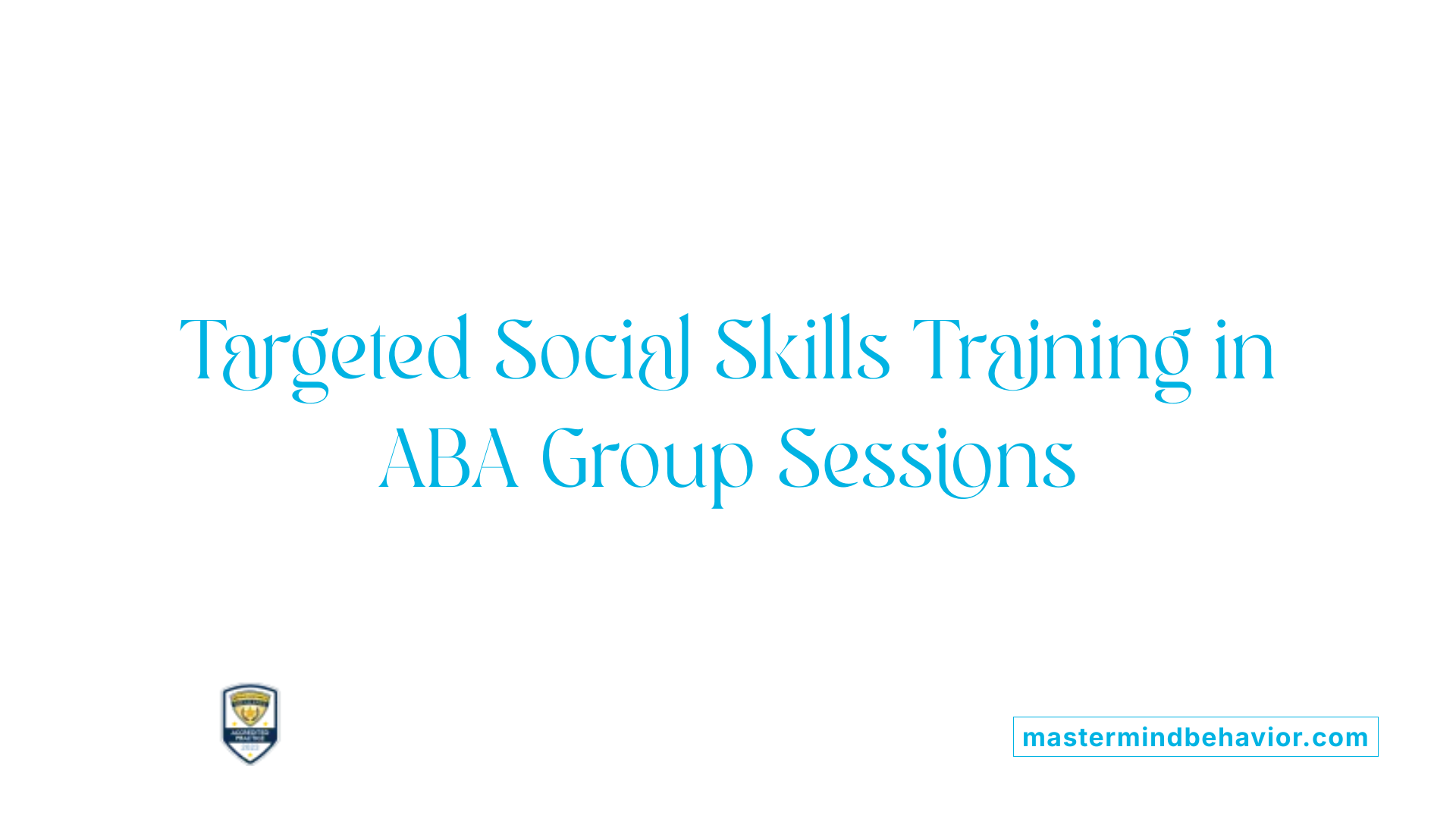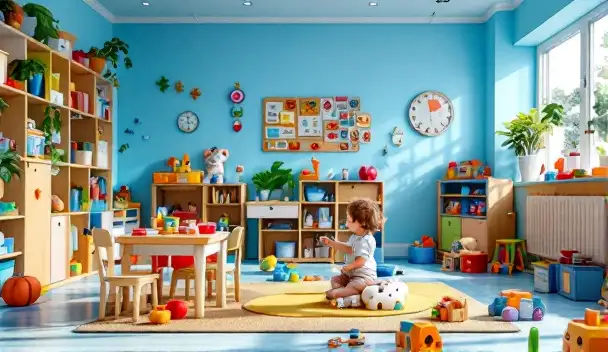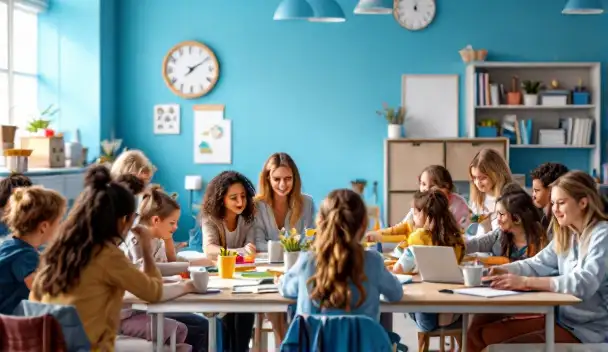How ABA Supports Social Communication In Group Settings

Understanding ABA and Its Role in Social Development
Applied Behavior Analysis (ABA) is a scientifically grounded approach that plays a vital role in developing social communication skills among children with autism, especially within group settings. By utilizing tailored strategies, ABA aims to foster meaningful peer interactions, social understanding, and independence, thereby improving overall quality of life.
The Foundation of ABA in Social Skills Development
 Applied Behavior Analysis (ABA) is a scientific approach that helps understand and modify behavior through careful analysis and intervention. By applying ABA techniques, children with autism can learn essential social skills such as initiating conversations, recognizing facial expressions, understanding social norms, and engaging with peers.
Applied Behavior Analysis (ABA) is a scientific approach that helps understand and modify behavior through careful analysis and intervention. By applying ABA techniques, children with autism can learn essential social skills such as initiating conversations, recognizing facial expressions, understanding social norms, and engaging with peers.
ABA’s foundation is built on learning principles like reinforcement, modeling, and task analysis. These methods are customized to each child's unique needs, ensuring that growth in social communication is both effective and meaningful.
Some of the main strategies include positive reinforcement, where desired behaviors are rewarded to increase their likelihood. Modeling involves demonstrating appropriate behaviors for children to imitate, while task analysis breaks complex skills into smaller, manageable steps.
To teach social cues, ABA uses tools like social stories, visual supports, role-playing, and role-playing exercises. For example, children learn to read body language and tone of voice, establish eye contact, and understand non-verbal signals—all vital for effective social interaction.
ABA therapy is proven to help children interpret social cues, respond appropriately, and develop friendships. It also encourages participation in social environments by building communication and interaction skills, which are crucial for daily life.
By integrating these approaches into structured programs, ABA offers a comprehensive route for children to improve their social competence. Therapists, parents, and educators work together to reinforce these skills in various settings, fostering independence and social engagement.
This structured, data-driven therapy continues to be supported by extensive research demonstrating its effectiveness in enhancing social, language, and daily living skills among children with autism. The tailored nature of ABA makes it especially suitable for addressing individual social needs and promoting a more connected, confident social presence.
Applying ABA Techniques in Group Settings
 ABA therapy creates effective social learning environments through various structured techniques designed to teach children essential social skills. In group settings, these methods foster interaction, imitation, and reinforcement, helping children build meaningful relationships.
ABA therapy creates effective social learning environments through various structured techniques designed to teach children essential social skills. In group settings, these methods foster interaction, imitation, and reinforcement, helping children build meaningful relationships.
One of the fundamental strategies used is modeling, where both therapists and peer models demonstrate desired behaviors. Peer modeling is particularly impactful, as children observe and imitate their peers’ social behaviors. This not only encourages the development of appropriate communication skills but also promotes generalization of these skills across different social contexts.
Reinforcement strategies are central to ABA. Positive reinforcement involves rewarding desired behaviors—like initiating a conversation, sharing, or showing understanding of social cues—to encourage their repetition. These rewards can be verbal praise, tangible items, or social recognition, which motivate children to engage more actively in social interactions.
Structured group activities are designed to improve social skills intentionally. Sessions often include warm-up exercises, role-playing, cooperative games, and social stories. These activities serve as practical platforms for children to practice taking turns, sharing, resolving conflicts, and understanding emotions. Feedback sessions and corrective guidance are incorporated to reinforce learning and address individual needs.
Overall, ABA in a group setting emphasizes fostering peer relationships through collaborative tasks, encouraging empathy, and celebrating successes. These environments support children in applying learned skills, with many demonstrating improved peer interactions, confidence, and social understanding.
| Technique | Description | Example Activities | Additional Notes |
|---|---|---|---|
| Modeling & Peer Modeling | Demonstrating appropriate behaviors for children to imitate | Role-playing, peer-led activities | Promotes imitation and skill generalization |
| Reinforcement Strategies | Reward-based encouragement to increase desired social behaviors | Verbal praise, tokens, social recognition | Essential for motivating social engagement |
| Structured Group Activities | Planned exercises to practice specific social skills | Cooperative games, social stories | Focused on skills like sharing, turn-taking, emotional recognition |
Implementing these ABA techniques in group therapy helps children develop foundational social skills in a supportive, engaging manner, paving the way for better social integration both in therapy settings and real life.
Teaching Specific Social Skills in Groups

What social skills are typically taught in ABA group sessions?
In ABA group therapy, children learn a variety of social skills that are essential for effective interactions. These include recognizing facial expressions and body language, understanding social cues such as tone of voice and gestures, and mastering behaviors like turn-taking and initiating conversations. Sharing and collaborative play are also emphasized to foster positive peer relationships.
How do structured activities enhance social learning?
Structured activities play a critical role in social skill development within ABA group settings. Role-playing exercises enable children to practice real-life interactions, often with feedback from therapists to correct and reinforce behaviors. Social stories offer narratives that help children understand social norms and expectations. Additionally, cooperative games promote teamwork and problem-solving, making social learning engaging and effective. These methods facilitate understanding, confidence, and the ability to generalize social skills across various settings.
Supporting Social Engagement and Relationship Building

Building peer relationships
Social skills groups are instrumental in helping children develop meaningful peer relationships. These structured sessions encourage collaboration through activities like role-playing, cooperative tasks, and shared play, all guided by trained professionals. By participating in these group exercises, children learn how to initiate conversations, share experiences, and offer support to their peers. This environment provides safe opportunities for children to practice social skills, helping them forge friendships and establish support networks.
Encouraging empathy and cooperation
Developing empathy and cooperation is a central focus in social skills groups. Through targeted activities, children learn to recognize and interpret facial expressions, body language, and tone of voice, which are vital cues for understanding others' feelings. Role-playing scenarios and social stories reinforce these skills, promoting a sense of understanding and perspective-taking. As children go through these experiences, they gradually become more empathetic and cooperative, which enhances their ability to work with others effectively.
Celebrating social success
Celebrating achievements during social interactions boosts children's confidence and motivation to engage socially. In group settings, feedback sessions and positive reinforcement highlight each child's progress, whether it’s a successful conversation or sharing a toy. Recognizing these successes encourages children to continue applying their skills in more varied contexts. It also fosters a supportive atmosphere where children feel valued and motivated to participate actively.
| Key Aspect | Description | Supporting Techniques |
|---|---|---|
| Peer Relationship Development | Facilitating friendships through shared activities | Group play, collaborative tasks, guided interactions |
| Empathy and Cooperation | Teaching recognition of social cues and emotional understanding | Role-playing, social stories, visual supports |
| Celebrating Social Success | Reinforcing positive social behaviors | Feedback, rewards, praise |
Research shows that early intervention with social skills groups significantly improves children’s ability to interact socially. Such programs help reduce feelings of isolation, build confidence, and foster lifelong social competence.
For further insights into how peer relationships develop in ABA social groups, searching terms like "peer relationship development in ABA social groups" can provide valuable strategies and success stories.
Addressing Challenges and Promoting Skill Generalization

How does ABA address social variability and individual differences?
ABA therapy recognizes that every child with autism has a unique social and communicative profile. To accommodate this variability, behavior analysts conduct thorough assessments to understand each child's specific needs, strengths, and challenges. Based on these insights, tailored interventions are developed that target the child's individual social skills, whether it's recognizing facial expressions, initiating conversations, or interpreting social cues. This personalized approach ensures that children are taught skills that are relevant and effective for their particular social context.
The therapy employs techniques like task analysis and modeling, which break down complex social behaviors into manageable steps. Reinforcement is then used to encourage the acquisition of these skills. For example, if a child has difficulty understanding body language, the therapist might focus specifically on recognizing gestures and postures, continuously adjusting strategies based on the child's progress.
Furthermore, visual supports and social stories can be customized to suit the child's interests and comprehension level, making learning engaging and accessible. Overall, ABA’s flexible and individualized framework ensures that children develop social skills that align with their unique profiles, promoting meaningful social interaction.
Why is generalization important and how is it achieved?
Skill generalization—the ability to apply learned social behaviors across different settings, people, and situations—is crucial for meaningful social integration. Without it, skills learned in therapy may only be used in structured environments, limiting real-world effectiveness.
ABA addresses this challenge by intentionally designing interventions that promote transfer of skills beyond the therapy setting. This involves incorporating varied activities and scenarios that mimic real-life social interactions, such as group exercises, community outings, or family activities.
Involving caregivers and teachers in the therapy process is another strategy to enhance generalization. Training parents and school staff to reinforce social skills and create consistent expectations across environments helps children practice and solidify their new skills in multiple contexts.
Additionally, ABA programs often include multiple exemplars and varied reinforcement contingencies to encourage flexible application of skills. Practicing social behaviors in different settings, with different peers and adults, helps children become more adaptable in using their skills wherever they go.
Research shows that such approaches significantly improve the likelihood that children will utilize their social skills in everyday life, leading to better peer relationships, increased independence, and improved social confidence.
| Aspect | Strategy | Purpose |
|---|---|---|
| Personalization | Tailored assessments and interventions | Address individual differences |
| Skill Building | Task analysis, modeling, social stories | Teach specific social behaviors |
| Context Variety | Different activities and environments | Promote generalization |
| Caregiver Collaboration | Training and involvement | Reinforce skills across settings |
| Practice | Multiple exemplars and varied reinforcement | Encourage flexible application |
Understanding and supporting the generalization of social skills is essential for achieving lasting improvements in social functioning for children with autism, allowing them to navigate diverse social landscapes confidently.
Research Evidence Supporting ABA’s Effectiveness
Meta-analyses and study results
Research consistently supports the effectiveness of ABA therapy in improving social communication among children with autism. A comprehensive meta-analysis that included 29 studies with a total of 1,442 children—most around 3.55 years old—found that early interventions can lead to significant behavioral improvements. These studies reveal that children engaged in ABA show about five additional social communication initiations during observed sessions, a meaningful increase that indicates better engagement.
The analysis also highlighted that interventions delivered by trained clinicians tend to have higher effect sizes, although parent-delivered programs also produced notable gains. Measurements taken in settings similar to the intervention environment showed larger effects, emphasizing the importance of context in assessing progress. Overall, the evidence from these large-scale studies endorses ABA as an effective, science-based approach to foster social skills.
Outcomes in social behaviors
ABA therapy focuses on developing numerous social skills, including recognizing facial expressions, body language, and social cues such as tone of voice. Techniques like modeling, reinforcement, social stories, and visual supports help children improve their understanding and use of verbal and non-verbal communication.
Children learn to initiate and maintain conversations, interpret social signals, and develop peer relationships. Group therapy sessions are structured to promote social interaction through activities like turn-taking, shared tasks, role-playing, and feedback. These activities enhance skills such as sharing, conflict resolution, and establishing eye contact.
Impact of early intervention
Early interventions are critically important for optimizing social outcomes. The research indicates that children around 3.81 years of age benefit the most from targeted social communication therapies, with the largest impact observed at this age.
Starting therapy during this sensitive developmental window leverages the brain’s higher plasticity, enabling children to acquire social behaviors more readily. Early intervention not only increases social initiations but also helps children form peer relationships, engage more meaningfully, and build confidence.
| Aspect | Findings | Additional Notes |
|---|---|---|
| Age of intervention | Greatest benefits around 3.81 years | Benefits diminish after this age |
| Delivery method | Clinician-led interventions show highest effectiveness | Parent-led programs are also beneficial |
| Measurement context | Larger effects in similar settings | Emphasizes importance of real-world practice |
| Main outcomes | Increased social initiations, better peer interactions | Key behaviors include shared play and conversation |
This body of evidence underscores the importance of early, personalized ABA interventions delivered by trained professionals or parents. Such programs significantly enhance social communication skills, improve peer relationships, and contribute to long-term social success.
The Role of Educators and Caregivers in Reinforcing ABA Skills
How can parents and caregivers support ABA-driven social skills?
Parents and caregivers play a vital role in reinforcing the social skills children learn through ABA therapy. Training sessions led by qualified professionals teach them how to apply reinforcement techniques and to model desired behaviors consistently at home. By creating a supportive and structured environment, they can help children practice social skills like initiating conversations, understanding social cues, and engaging in peer play.
Collaborating closely with therapists ensures that strategies are aligned and tailored to each child's needs. Regular communication allows for adjustments and reinforcement of skills that were learned during therapy sessions. This involvement not only boosts the child's confidence but also increases the likelihood of generalizing skills across different settings.
What settings should incorporate ABA social skills strategies?
To maximize the benefits, ABA-based social skills strategies should be integrated into various environments where children spend their time. Schools are prime locations for implementing structured activities like social stories and role-playing exercises, offering real-life practice for children.
Community centers and recreational facilities also provide valuable opportunities for children to apply social skills in group settings with peers. These environments naturally promote interactions, turn-taking, and cooperation.
Home settings serve as critical spaces for reinforcement and consistency. When caregivers incorporate ABA techniques, children gain a more comprehensive learning experience.
| Setting | Techniques Used | Purpose |
|---|---|---|
| Schools | Social stories, peer modeling, role-playing | Reinforce social norms and peer interaction |
| Community centers | Group activities, cooperative games | Promote social engagement and cooperation |
| Home | Reinforcement, modeling, social routines | Consistency and generalization of skills |
By ensuring strategies are consistently applied across these environments, children with autism can develop robust social skills, improve their peer relationships, and foster greater independence.
Summary of the Benefits of ABA in Group Social Communication
ABA therapy plays an important role in enhancing social interaction skills among children, especially those with autism. Through structured, data-driven methods such as modeling, reinforcement, social stories, and visual supports, ABA helps children learn to recognize facial expressions, body language, tone of voice, and social norms.
One of its significant advantages is increasing social participation. Children learn to start and maintain conversations, engage in peer play, and interpret social cues effectively. These skills enable them to build friendships, participate in group activities, and feel more confident in social environments.
Building independence is another crucial benefit of ABA therapy. By teaching children to understand social cues and respond appropriately, therapy supports their ability to navigate complex social situations without constant adult supervision. This fosters self-reliance and better prepares them for diverse settings.
Research shows that ABA's positive outcomes extend beyond individual skills. It improves overall social results, facilitating the development of meaningful relationships and reducing social anxiety. Group therapy further enhances these benefits by providing real-life practice through peer engagement, role-playing, and collaborative tasks.
Early and personalized intervention is vital, as evidence indicates that children around 3.81 years experience the most substantial improvements. Tailoring strategies by licensed professionals or even trained parents ensures interventions meet each child's unique needs, leading to more successful social communication development.
In summary, ABA supports children in becoming active social participants, gaining independence, and achieving better social outcomes across various settings, making it a vital approach in early autism intervention.
Conclusion: Transforming Social Interactions with ABA
ABA therapy has proven to be an influential approach in improving social communication skills among children with autism. Through structured and data-driven methods, it teaches essential social behaviors such as recognizing facial expressions, understanding body language, and engaging in conversations. Techniques like modeling, reinforcement, and role-playing create supportive learning environments where children can develop peer interaction skills and social competence.
Group therapy, a significant component of ABA, enhances social engagement by encouraging peer interaction, turn-taking, sharing, and conflict resolution. Facilitated by trained professionals and reinforced with activities like social stories and visual supports, these sessions help children practice real-life social skills and build friendships. Peer modeling further encourages imitation of positive behaviors, contributing to a child's confidence and social understanding.
Ongoing research highlights the importance of early intervention, especially around age 3.8 years, and demonstrates that both clinician-led and parent-delivered ABA programs effectively improve social communication. As new techniques emerge, the personalization of interventions ensures that individual needs are met, resulting in better social integration and increased quality of life.
Looking ahead, the future of ABA in social skills development remains promising. Continued research aims to enhance intervention effectiveness, broaden application contexts, and support generalization of skills across environments. By integrating ongoing scientific advancements, ABA is poised to foster social independence and meaningful peer relationships for children with autism, shaping a more inclusive society.
Building a Foundation for Social Success
ABA’s structured, evidence-based methodologies play a crucial role in enhancing social communication in group settings. By fostering peer interactions, teaching essential social skills, and promoting independence, ABA helps children with autism navigate social environments confidently. Continued research and collaborative efforts among therapists, parents, and educators will further strengthen these interventions, ensuring children can build meaningful relationships and thrive socially.
References
Recent articles

The Role Of ABA Therapy In Fostering Emotional Independence
Empowering Independence Through Evidence-Based Strategies

Teaching Abstract Thinking Skills Through ABA
Enhancing Cognitive Flexibility in Children with ABA Strategies

How ABA Therapy Helps Build Healthy Daily Habits
Building Healthy Habits with Evidence-Based Strategies

The Role Of ABA Therapy In Building Flexible Thinking Skills
Unlocking Cognitive Flexibility Through ABA Interventions

ABA Therapy For Building Positive Self-Image In Children
Transforming Self-Perception Through Evidence-Based Interventions

How ABA Therapy Supports Adolescents In Social Problem Solving
Empowering Teens Through Evidence-Based Social Skills Development



